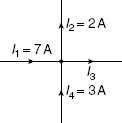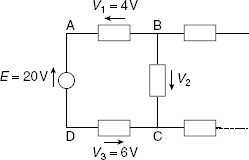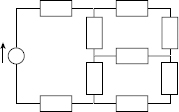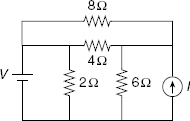Objective Questions on Kirchhoff’s Laws, Mesh, and Node
Objective Questions on Kirchhoff’s Laws, Mesh, and Node, Objective Questions on KCL, KVL, Mesh and Node, MCQ on Kirchhoff’s Laws, MCQ on Mesh, MCQ on Nodal Analysis, Objective Questions on Kirchhoff’s Laws, Mesh and Nodal Analysis
Multiple Choice Questions on KCL, KVL
- Kirchhoff’s Laws are valid for-
- linear circuits only
- passive time-invariant circuits
- nonlinear circuits only
- both linear and nonlinear circuits
Answer: both linear and nonlinear circuits
2. KCL is a consequence of law of conservation of
- energy
- charge
- flux
- all of the above
Answer: Charge
3. Current I3 in the following circuit is

- −8 A
- −2 A
- 2 A
- 8 A
Answer: 8 A
4. The voltage V2 in the circuit is

- −10 V
- 10 V
- 12 V
- 18 V
Answer: -10 V
5. Nodal analysis involves systematically applying Kirchhoff’s current law to the nodes within a circuit.
- True
- False
Answer: True
6. Mesh analysis involves systematically applying Kirchhoff’s current law to the meshes within a circuit.
- True
- False
Answer: False
7. How many meshes are present within the following circuit?

- 1
- 2
- 3
- 4
Answer: 3
8. An electrical network with seven independent branches and independent nodes excluding the reference node should preferably be solved by
- Mesh current analysis
- KCL
- Node voltage analysis.
- KVL and KCL
Answer: Node voltage analysis.
9. Which one of the following laws of the electrical network is used in the nodal analysis of the network?
- KVL
- KCL
- Faraday’s laws
- Ohm’s law
Answer: KCL
10. In the mesh current analysis, the number of mesh equations is equal to the number of meshes.
- True
- False
Answer: True
11. In assigning the direction of branch currents,
- The directions are critical
- The directions are not critical
- They must point into a node
- They must point out of a node
Answer: The directions are not critical
12. The branch current method uses
- Kirchhoff’s voltage and current laws
- Thevenin’s theorem and Ohm’s law
- Kirchhoff ’s current law and Ohm’s law
- The superposition theorem and Thevenin’s theorem
Answer: Kirchhoff ’s voltage and current laws
13. The voltage at node 1 in the Figure is

- 6.15 V
- 12.5 V
- 4.25 V
- 3.75 V
Answer: 4.25 V
14. A super mesh is created if
- a voltage source is common to two loops
- a current source is common to two loops
- a current source is common to two nodes
- a voltage source is common to two nodes
Answer: a current source is common to two loops
15. A super node is created if
- a voltage source is common to two loops
- a current source is common to two loops
- a current source is common to two nodes
- a voltage source is common to two nodes
Answer: a voltage source is common to two nodes
16. The number of effective loops in the circuit of the figure below is

- 1
- 2
- 3
- 4
Answer: 4
17. The number of nodes in the circuit of the figure below is

- 1
- 2
- 3
- 4
Answer: 2
18. The voltage at node 1 in the figure below is

- 2.5 V
- 5 V
- 3 V
- 2 V
Answer: 5 V
19. Current I1 in the circuit shown in the figure below is

- −5 A
- 5 A
- 2 A
- 1 A
Answer: 2 A
20. Find V1 in the circuit shown in the figure below.

- -2.67 V
- 8 V
- 5.33 A
- 2.67 V
Answer: 8 V
Related Posts: